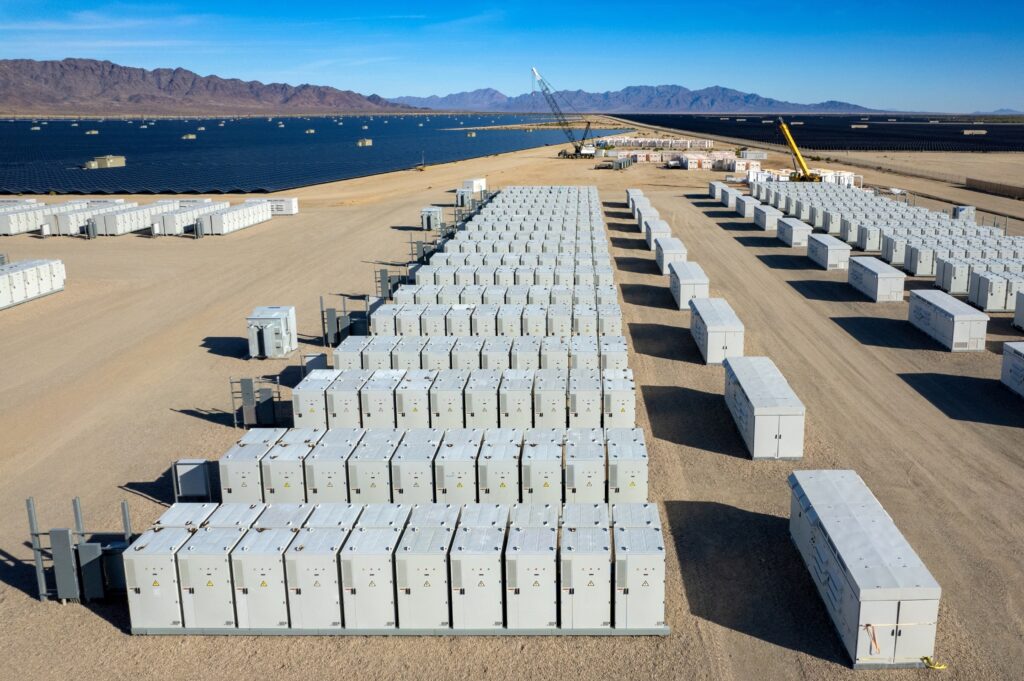Four Key Takeaways from SJF Ventures’ Climate Week NYC Panel on Climate Adaptation and Resilience
By Joey Barrick
As the frequency and severity of climate-related events increase, investors, insurers, and entrepreneurs are turning their attention to climate adaptation and resilience. But how do we actually prepare for and recover from the current impacts of climate change, and what steps can accelerate innovation for a more resilient future?
To answer these questions, SJF Ventures hosted an in-person panel discussion during Climate Week NYC that brought together Amy Barnes, head of sustainability and climate change strategy at Marsh McLennan; Jay Koh, co-founder and managing director of The Lightsmith Group; Matt Stein, co-founder and CEO of Salient Predictions; and Mishal Thadani, Co-Founder and CEO of Rhizome.
The discussion — moderated by SJF’s co-founder and managing director, Dave Kirkpatrick — explored topics ranging from upside opportunities in managing climate risks to embedding A&R solutions at large corporations. The panel occurred the day before the devastating effects of Hurricane Helene brought the urgency of the topic into sharp relief.
Here are four of the biggest takeaways from their conversation:
1. Historic emissions will lead to unavoidable impacts — and opportunities — in the coming years
Emissions from human activities have irreversibly damaged the planet, according to the Intergovernmental Panel on Climate Change, and Koh noted that the amount of climate change between now and 2030 based on emissions from decades ago is basically fixed. The outcomes are unavoidable. Investors, Koh said, have more certainty that climate change will accelerate over the next five to 15 years — a huge investment duration — than they do about interest rates, inflation, or artificial intelligence.
That presents downside risk, of course, but also unavoidable opportunities — for technology, for investment, for collective action, and for mobilization. There is an upside opportunity for investors and entrepreneurs in managing the risk and change. Stein, for example, recognized that today’s weather models are wrong more often as climate change produces more volatile weather patterns. Salient Predictions uses machine learning to address that problem with long-range forecasts that will enable more effective planning and improve outcomes for both people and economies.
2. The “next Tesla” will focus on managing the complexity of a climate-impacted environment
This month, The Lightsmith Group invested in Beep Saúde, a Brazilian company that provides rapid in-home vaccinations and diagnostics. What does that have to do with climate A&R? Brazil saw 5.1 million new cases of dengue fever this year as flooding and deforestation led to the proliferation of disease-carrying mosquitoes. Koh believes technology is the only way to deal with a more volatile environment.
Today, many of the companies managing risks — from supply chain and food production to water availability and shelter — are looking backwards 50 to 100 years rather than looking forward. But Koh points out that every single supply chain software company who fails to manage weather volatility will be out of business in five years. Those companies that can deliver Amazon packages despite the Texas freeze or California wildfires — by looking through the windshield rather than the rearview mirror — will seize market share.
Large tech companies are leading the charge, followed by companies who depend on ecosystem services or agricultural supply chains highly subject to climate impacts. Barnes gave the example of Nespresso partnering with Blue Marble to provide climate insurance for coffee farmers in South America, protecting their income and strengthening their climate resilience. C-suites at these companies are championing adaptation and resilience planning because climate change is an existential threat.
Within the decade, companies focused on managing the complexities of our new environment will reach “Tesla size,” Koh believes. Rather than simply fending off coming disasters, they’ll be able to provide all of the food, water, shelter, transportation, and energy that consumers want in spite of ongoing climate impacts. Any company or entrepreneur who can figure out how to manage this risk will generate hundreds of millions or billions of dollars.
3. Resilience requires both organizational change and technology innovation
Assigning accountability for resilience is a major challenge. “When you have many parents, you end up having none,” Barnes said.
Some large tech companies focused on climate issues have appointed Chief Resilience Officers, but the role isn’t held widely. At utilities with billion dollar budgets, climate resilience is often housed in corporate strategy. Ultimately, climate change affects people, so Chief Human Resource Officers need to be involved to ensure resilience measures address the needs of the workforce. Barnes cited an example of a hospital system in California struggling to recruit doctors and nurses because they cannot insure their homes.
Placing a CRO figurehead on top would be a good first step, Thadani said, but he’d really like to see the largest budget owners within a corporation own resilience and integrate it into their capital outlay. Unless you have the precise bridge necessary to link planning and corporate strategy, everyday decisions won’t be made with climate adaptation in mind. That’s why Rhizome often sells its technology to a company’s SVP of infrastructure development, with the climate risk — based on input from experts in corporate strategy and climate resilience — already baked in.
Measuring climate adaptation and resilience is difficult because it touches so many different departments and outcomes. As Thadani said, what doesn’t get measured doesn’t get managed. He pointed to Stein and Salient Predictions as a pioneer in the space. “When we get to the point where we can unequivocally say that climate adaptation and resilience gets measured like carbon mitigation, then we’re going to start to see a whole lot of momentum swing in that direction,” Thadani said. “Until we get to that point, I think there’s going to be a lot of fumbling around.”
Startups building adaptation and resilience-focused technologies are finding early customers in the financial markets, while large corporations are slower to engage. Stein gave a shout-out to the people within corporations who introduce founders to the right internal leaders as they seek homes for their solutions. Embedding A&R solutions at large corporations requires nuance, relationship-building, and a very clear business case. Founders may want to focus on the areas where they’ve found early traction — such as quantitative hedge funds and commodity trading firms — before expanding to new use cases once additional funding extends their runway. The clock is always ticking.
4. Governments must act to distribute climate solutions quickly where they’re needed most
Huge engineering solutions — like upgrading the Thames Barrier — are hugely expensive and hard for the public sector to fund, Barnes notes, yet the private sector would be a major beneficiary of increased resilience. So how do we solve the free-rider problem or the prisoner’s dilemma: the person that can create climate resilience often isn’t the beneficiary of the resilience. Barnes says, we need a model for an interoperable measure of resilience and a way of communicating resilience between the public and the private sectors, one that will simplify both financing and the cost of quantification.
As Koh said, climate impacts and risks are already here, they’re just not evenly distributed. The solutions will also not be evenly distributed unless governments act to do so. Koh pointed to the mass casualty event where 1,200 people died from heat in Mecca and said we can expect that scenario to repeat unless our societies bring technology solutions rapidly to the people who can least afford them.
The Lightsmith Group is working with the U.S. State Department to buy down the cost of American water technology and deploy the solutions in small islands like Tonga, Vanuatu, and Papua New Guinea. Those nations are not typical customers for early-stage technology startups, but they’re vulnerable and require the intervention of capital providers, Koh explained. As climate challenges scale, the companies providing solutions will scale. The tools we need to deal with the problem will be massively valuable as the problem grows more complex. But we need to bring them as fast as we can to the people that need them most, even if they can’t afford them in the short term. That’s where the government has to intervene.
____________
For a deeper look at some of the topics discussed, visit SJF’s recently published Field Notes market map of the current landscape of companies working in climate adaptation and resilience.
SJF Ventures is one of few funds with a proven track record partnering with companies addressing climate change. We’re always looking for new entrepreneurs who share our vision for creating highly successful businesses that protect our planet.
Are you a climate adaptation and resilience founder? We’d love to hear from you and learn about how your technology can combat the climate crisis.



